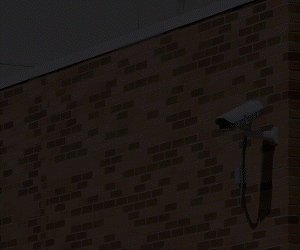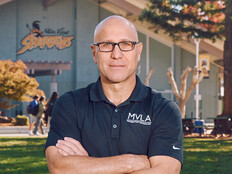Local education agencies put $2.4 billion toward physical and health safety efforts from the federal government’s Elementary and Secondary School Emergency Relief Fund — launched to provide K–12 support during the pandemic — in fiscal year 2021. They also have plans to spend an additional $18.5 billion on these efforts, according to the Department of Education.
However, with deadlines rapidly approaching to spend remaining ESSER funds, many districts may need to look for other ways to pay for future physical security improvements.
Some states have designated funding specifically for school safety needs. Missouri Gov. Michael Parson, for instance, included a $20 million provision for physical security enhancements and other safety measures in his fiscal year 2023 early supplemental budget request.
In May, the governor announced 169 district and charter school applicants would receive a portion of the funding; among them, the Fort Osage R-1 School District, which encompasses both suburban and rural areas in Independence, Mo.
The district plans to use its share of the funds, approximately $400,000, on updating and expanding its inventory of more than 300 security cameras. The cameras will be connected via Power over Ethernet and will operate with a central switch, according to Network Administrator Brett Carter.
New Axis cameras, used in tandem with Milestone video technology software, will let the district take advantage of higher resolution and metadata capabilities, says Steve Morgan, assistant superintendent of finance and operations.
“These cameras allow us to do optical and pan-tilt-zoom,” Morgan says. “We can reduce glare and improve image quality, search for license plates and vehicle brands, and we can set up a speed zone on a camera. So, if an object goes through too quickly, an alert is sent and the data can be bookmarked for future reference.”
In districts of different sizes and geographical locations, the physical safety needs can vary widely, as can the fiscal resources.
Government Programs May Supplement Security Spending
Schools within the Wake County Public School System — the 15th largest district in the U.S., per the National Center for Education Statistics — were able to individually decide how they wanted to handle visitor access in the past. As a result, locations’ processes varied from tech-based systems to signing in guests using a pen and paper, according to Senior Director of Security Russ Smith.
An external consultant reviewed the Cary, N.C., district’s physical safety practices. and suggested that schools adopt a consistent approach to visitor management. That led school principals, IT team members and other internal stakeholders to vet potential solutions and ultimately select Verkada’s security software, Smith says.
READ THE REVIEW: This Verkada camera offers powerful analytics.
Once the new process is instituted this summer, guests will be buzzed into schools, and front office staff members will scan and enter the visitors’ IDs into the system, which will check names against sex offender registries and other databases.
“The recommendation from the assessor was to use a system that was networked — one we could manipulate to put in domestic violence orders, custody orders and things of that nature. So, if somebody was not supposed to be on campus, it would give us a red flag,” Smith says.
The district likely would have paid for the new visitor management system with local funding, he says, such as a county capital improvement bond that’s earmarked for security needs. However, when administrators learned the state-run North Carolina Center for Safer Schools would be offering grant funding for safety equipment and other expenses, they applied and ultimately received $659,867.
“It was just good timing,” Smith says. “We were moving forward with some of the recommendations from the assessment, the grant came out, and it’s funding 100 percent of it.”
Residents Should Receive Detailed Information About Spending Plans
On a national level, 45 percent of schools’ revenue comes from local sources such as property taxes — a slightly lesser amount than state-supplied funds, which constitute 47 percent of schools’ finances. However, some districts may rely more on local resources to fund certain operations, which could make getting buy-in for new initiatives like physical school security enhancements particularly important.
Situated in a largely rural area, Grand Forks Public Schools in North Dakota serves approximately 7,400 students collectively within the Grand Forks Air Force Base Public School District, which draws nearly 30 percent of its revenue from local sources.
In 2021, the district put forth a referendum that involved consolidating elementary schools with smaller enrollments into a new K–8 campus, says Eric Ripley, executive director of career and technical education and technology. But the plan didn’t resonate with voters, he says, and it didn’t pass.
Before this year’s May vote on a separate $79 million referendum, which included an $18 million allotment for safety and security measures, Grand Forks Public Schools reached out to residents via a community survey to gauge their feelings about the specific provisions.
EXPLORE: How K-12 IT and security leaders use technology to shore up school safety.
The 2023 referendum ultimately was approved, garnering more than the required 60 percent minimum.
“Not everything that was asked in the survey was put in the referendum,” Ripley says. “The district did a really nice job of looking at the feedback from the community to determine where the support was.”
The referendum funding will allow the district to relocate admin offices so buildings have a consistent vestibule-type entrance area, replacing its current push-to-talk entry system.
“Like anything else, the technology ages,” Ripley says. “We’re dealing with a number of facilities that were built 50-plus years ago and retrofitting those to meet today’s standards.”
Click the banner below to learn how to improve your districts’ physical security.
In April, voters approved Springfield Public Schools’ request for $220 million in general obligation bonds for school security and other upgrades. Residents in Springfield, Mo., a midsized city according to NCES, won’t see a tax increase as a result.
The district’s deputy superintendent of operations, Travis Shaw, says this may have helped garner support for the measure. However, the district also dedicated months to community outreach initiatives.
A task force comprising parents, business leaders, school staff and others examined a list of safety and security items the district created using input from school IT, security and facilities professionals. The list included many potential upgrades that would specifically benefit schools in a midsized city. Some will now be implemented, such as adding a protective, shatterproof film to all ground floor windows in the district’s roughly 60 school buildings.
“Passing a bond issue is never an easy task,” Shaw says. “What went before voters was essentially a list this task force spent three or four months in meetings studying and making, and then they ultimately made a recommendation to our school board in October.”
LEARN MORE: Six creative ways to spend K–12 ESSER funds before they expire.
The film’s installation is only the first phase of the district’s planned upgrades. It hopes to begin other security renovations, such as adding more sensors to building rooftops.
Springfield Public Schools currently has sensors installed on several buildings that can send notifications via Wi-Fi to the school’s internal police officers and local law enforcement. Shaw says the sensors have aided in the apprehension of individuals trying to break in through roof hatches before they’re able to leave campus.
“We have really strong procedures, training and communication that take place within the buildings,” he adds. “It’s a matter of, let’s do what we can to harden the buildings as much as we fiscally can.”
23.3%
Local education agencies’ planned Elementary and Secondary School Emergency Relief Fund spending on facilities and operations
Source: FutureEd.org, “Financial Trends in Local Schools’ Covid-Aid Spending,” July 7, 2022













